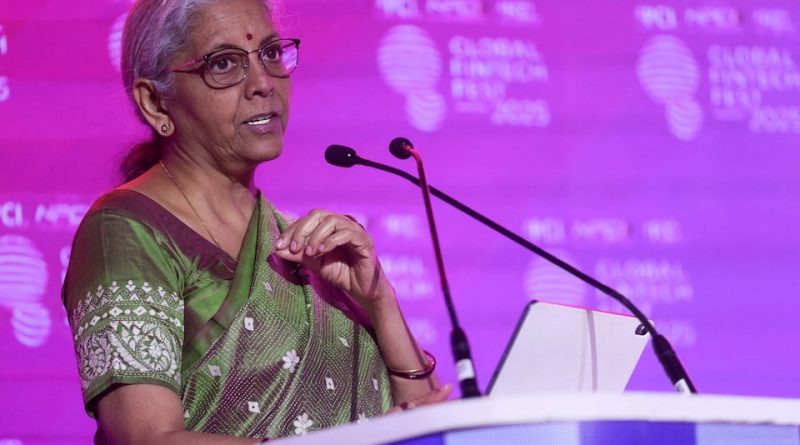India Aims to Build Global-Scale Banks Through Strategic Mergers and Financial Reforms
Mumbai – India is preparing to take a major step toward strengthening its banking sector by exploring the creation of larger, globally competitive banks through mergers and consolidation.
Finance Minister Nirmala Sitharaman announced that discussions are ongoing with the Reserve Bank of India (RBI) and other stakeholders to develop an ecosystem capable of supporting world-class financial institutions that can match global standards.
The initiative represents a vision to enhance India’s financial stability, improve efficiency, and strengthen credit capacity to meet the growing needs of the economy.
Currently, India has 12 state-owned banks holding assets worth approximately 171 trillion rupees, accounting for over half of the nation’s total banking assets.
By consolidating these institutions, the government aims to create larger, stronger entities capable of supporting infrastructure growth, industrial development, and international trade.
This approach builds on the success of the 2020 consolidation, which reduced the number of public sector banks from 27 to 12.
That earlier merger drive streamlined operations, improved governance, and created more resilient financial institutions.
The new round of consolidation under consideration could further enhance capital efficiency and global competitiveness, ensuring India’s financial system keeps pace with the country’s rapid economic progress.
According to the finance minister, India’s goal is to create an environment where banks can not only thrive domestically but also operate successfully on a global scale.
She emphasized that India needs “a lot of big, world-class banks” and that the government will work closely with the RBI to design strategies that ensure sustainable growth for the banking industry.
The move also reflects India’s ambition to position itself as a major financial hub in Asia, capable of serving both domestic and international markets.
Larger banks are expected to improve financial inclusion, provide better lending support to small and medium enterprises, and finance large-scale infrastructure projects essential for national growth.
The government is also considering allowing higher levels of foreign investment in state-run banks, which could bring fresh capital, innovation, and international best practices into the sector.
Such measures would enhance transparency, boost investor confidence, and accelerate modernization in areas like digital banking, cybersecurity, and financial services technology.
Creating bigger banks through strategic consolidation is not just about scale—it is about improving quality, efficiency, and risk management.
By combining strengths and optimizing resources, India can ensure its public sector banks become more dynamic and adaptable to the evolving financial landscape.
Minister Sitharaman highlighted that while consolidation is one route, the government is equally focused on ensuring that the overall banking ecosystem becomes more vibrant and dynamic.
This includes fostering competition, encouraging innovation, and ensuring that both public and private sector banks have the capacity to contribute meaningfully to India’s growth story.
With the right regulatory framework and collaboration between the government, RBI, and financial institutions, India’s banking sector is poised for a transformative leap.
The reforms aim to strengthen the foundations of the financial system, empower banks to take larger roles in financing economic activities, and align India’s banking standards with global benchmarks.
As the Indian economy continues to expand, strong and globally competitive banks will be essential to support industrial growth, exports, infrastructure investment, and entrepreneurship.
This initiative to create “big banks” symbolizes the country’s broader economic ambition—to build institutions that are capable, credible, and ready to lead India into the next phase of sustainable prosperity.



